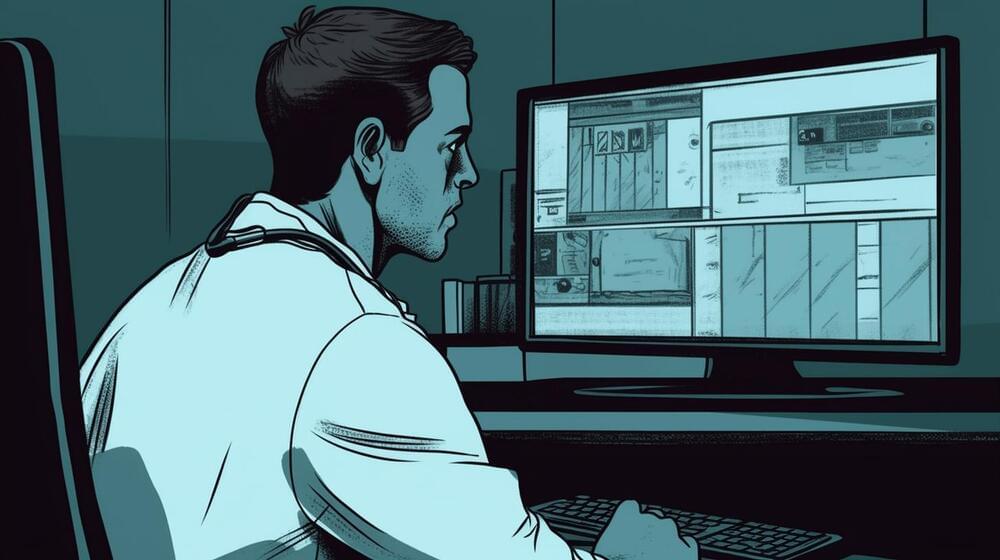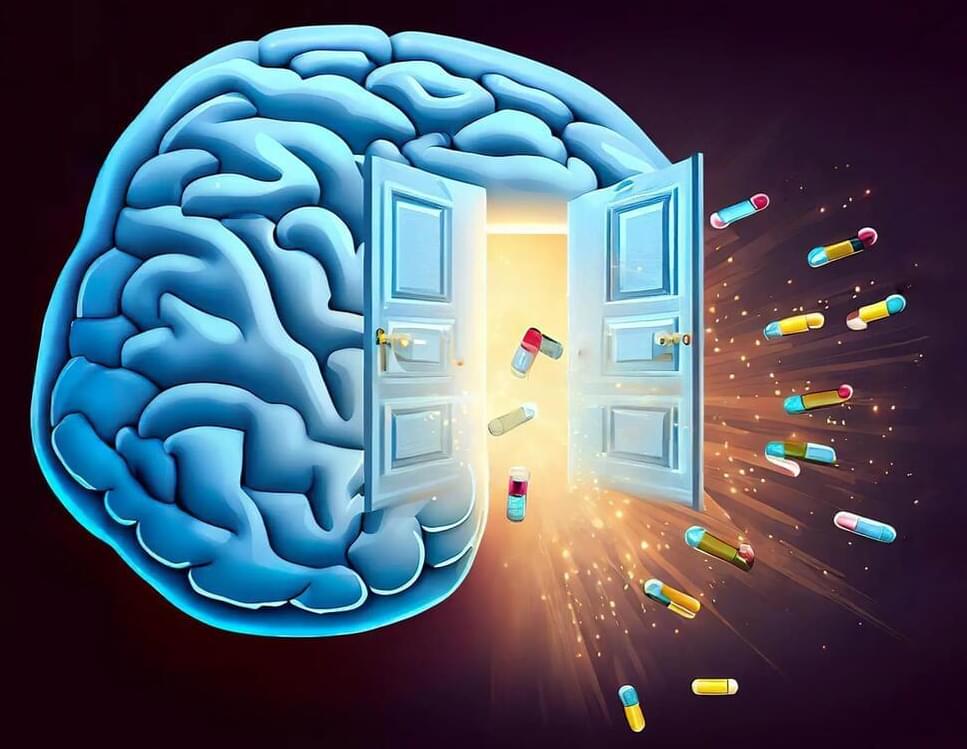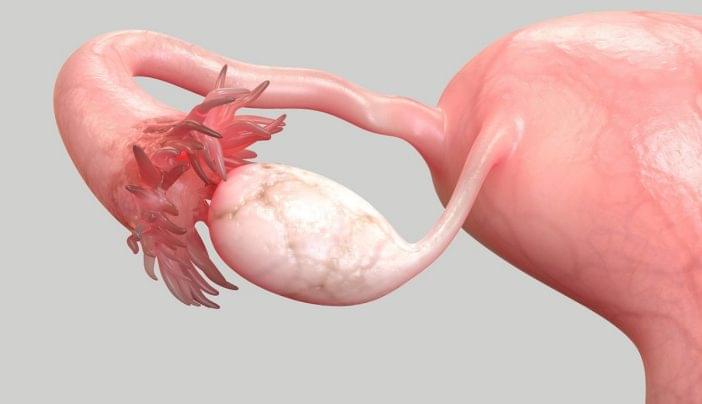Menno van Dijk/iStock.
This according to a study reported by The National Post on Friday.


According to a recent study, ChatGPT surpasses the quality and empathy of physicians when responding to online queries. However, there are some caveats.
A recent study published in JAMA Internal Medicine reveals that ChatGPT surpasses physicians in terms of quality and empathy when responding to online queries. The study evaluated ChatGPT’s performance compared to physicians in answering patient questions from Reddit’s r/AskDocs forum.
The cross-sectional study involved 195 randomly selected questions and found that chatbot responses were preferred over physician responses. ChatGPT received significantly higher ratings for both quality and empathy.
Join us on Patreon! https://www.patreon.com/MichaelLustgartenPhD
Discount Links:
NAD+ Quantification: https://www.jinfiniti.com/intracellular-nad-test/
Use Code: ConquerAging At Checkout.
Green Tea: https://www.ochaandco.com/?ref=conqueraging.
Oral Microbiome: https://www.bristlehealth.com/?ref=michaellustgarten.
Epigenetic Testing: https://trudiagnostic.com/?irclickid=U-s3Ii2r7xyIU-LSYLyQdQ6…M0&irgwc=1
Use Code: CONQUERAGING
At-Home Blood Testing: https://getquantify.io/mlustgarten.

Maybe you can’t tell a book from its cover, but according to researchers at MIT you may now be able to do the equivalent for materials of all sorts, from an airplane part to a medical implant. Their new approach allows engineers to figure out what’s going on inside simply by observing properties of the material’s surface.
The team used a type of machine learning known as deep learning to compare a large set of simulated data about materials’ external force fields and the corresponding internal structure, and used that to generate a system that could make reliable predictions of the interior from the surface data.
The results have been published in the journal Advanced Materials, in a paper by doctoral student Zhenze Yang and professor of civil and environmental engineering Markus Buehler.

MIT engineers have designed a two-component system that can be injected into the body and help form blood clots at the sites of internal injury. These materials, which mimic the way that the body naturally forms clots, could offer a way to keep people with severe internal injuries alive until they can reach a hospital.
In a mouse model of internal injury, the researchers showed that these components—a nanoparticle and a polymer—performed significantly better than hemostatic nanoparticles that were developed earlier.
“What was especially remarkable about these results was the level of recovery from severe injury we saw in the animal studies. By introducing two complementary systems in sequence it is possible to get a much stronger clot,” says Paula Hammond, an MIT Institute Professor, the head of MIT’s Department of Chemical Engineering, a member of the Koch Institute for Integrative Cancer Research, and one of the senior authors of a paper on the study.

What the human genome is lacking compared with the genomes of other primates might have been as crucial to the development of humankind as what has been added during our evolutionary history, according to a new study led by researchers at Yale and the Broad Institute of MIT and Harvard.
The new findings, published April 28 in the journal Science, fill an important gap in what is known about historical changes to the human genome. While a revolution in the capacity to collect data from genomes of different species has allowed scientists to identify additions that are specific to the human genome —such as a gene that was critical for humans to develop the ability to speak—less attention has been paid to what’s missing in the human genome.
For the new study researchers used an even deeper genomic dive into primate DNA to show that the loss of about 10,000 bits of genetic information—most as small as a few base pairs of DNA—over the course of our evolutionary history differentiate humans from chimpanzees, our closest primate relative. Some of those “deleted” pieces of genetic information are closely related to genes involved in neuronal and cognitive functions, including one associated with the formation of cells in the developing brain.

Caltech researchers discovered an enzyme that enables viral vectors to cross the blood-brain barrier, potentially aiding brain disorder drug development and research.
The blood–brain barrier (BBB) is a stringent, nearly impenetrable layer of cells that guards the brain, protecting the vital organ from hazards in the bloodstream such as toxins or bacteria and allowing only a very limited set of small molecules, such as nutrients, to pass through. This layer of protection, however, makes it difficult for researchers to study the brain and to design drugs that can treat brain disorders.
Now, a new study from Caltech has identified a previously unknown mechanism by which certain viral vectors—protein shells engineered to carry various desired cargo—can cross through the BBB. This mechanistic insight may provide a new approach to designing viral vectors for research and therapeutic applications. Understanding this and other new mechanisms could also give insight into how the brain’s defenses may be exploited by emergent pathogens, enabling researchers to prepare methods to block them.
ChatGPT has been hitting the headlines since its debut and after passing exams at business and law schools. Now, most recently, the AI has nearly passed the US Medical Licensure Exam (USMLE) necessary to pursue medical practice within the US.
ChatGPT: Revolutionary AI
NDTV reports that Open. AI, which has been an investment recipient of Microsoft and Elon Musk, built the ChatGPT chatbot. ChatGPT specifically stands for “Chat Generative Pre-Trained Transformer” and is a bot that is language-based and that is capable of coming up with responses that mirror those of humans.

A woman could have her fallopian tubes removed for any number of reasons. Sometimes, it’s necessary to treat an ectopic pregnancy or to resolve an infection caused by pelvic inflammatory disease. In other cases, it’s done as a form of permanent birth control.
But a growing body of evidence suggests that the distal fallopian tube — or flower-shaped section located nearest the ovary — is the site of many cases of high-grade serous ovarian cancer, the most common type of ovarian cancer and one of the most aggressive.
Research also suggests that an opportunistic salpingectomy — the complete removal of the fallopian tubes during an unrelated pelvic surgery — could help reduce the chances of one day developing ovarian cancer.

All land animals have an Arc gene in their brain. This gene serves as the “master regulator” that determines how neuronal synapses (i.e., neuronal connections) form in the brain.
Two independent research groups [1, 2] have published their findings in the prestigious academic journal, Cell, in 2018 — showing that Arc behaves like viruses and has ancestral roots in retroviruses.
In a sense, the Arc gene moulds and sculpts the brain connections — forming the mind — making amphibians think like amphibians, birds like birds, reptiles like reptiles, monkeys like monkeys, and humans like humans.